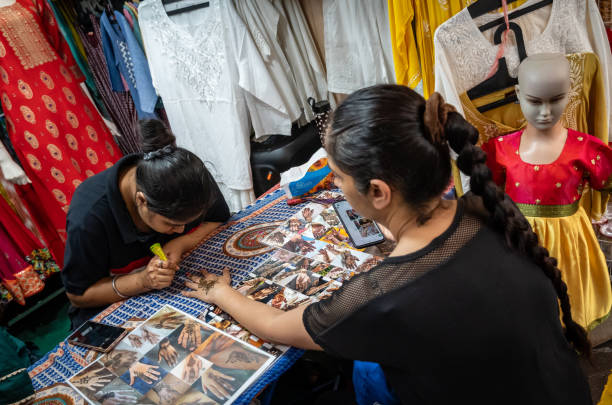Outside the Big Galleries
There sit the great museums to catch the newspaper attention, but in obscure corners we find quiet closets to the memory. These archive rooms and museum-sized attics provide additional layers to singapore arts and culture, which would otherwise be too delicate to fossilize in mainstream institutions. They lack expansive architecture and large collections, but they are filled with something quite as potent–intimacy. It is like entering someone else’s home, but the house is full of things that remind you of the lives that were lived but cannot be lived anymore.

The Sweetness of Little Places
These mini-museums are successful in locations not at first glance cultural. Some squat in old shophouses with fading paint. Others take shelter in neighbourhood structures or upper-story apartments. There is not much pomp to their appearances–a line of shelves chock-full of old enamel lunch boxes, wooden radios, and old photos. But everything is associated with a story. The ordinary turns into something exceptional as soon as it is located in the logical circle of memory.
The Speaking Objects
A typewriter collection is not only about typewriters. It reads of office workers banging out words in hot rooms prior to A/C. A book of school texts links generations of the young students who once scribbled in their margins during those protracted classes. These objects, which are commonly used today, become lenses that shed light on forgotten, tiny nuances of the social life of Singapore.
Masters of Niches Histories
The charm of micro-museums is that they are very precise. National galleries like to tell large stories, but here the rooms focus on the minutiae. One may even train specifically on the maritime tools. Another may exhibit old toys. There are also destinations that are all about food history, even featuring unfamiliar utensils no longer used in the modern world. All of the collections document a little bit of culture that is in the process of being lost.
Institution vs Community Effort
These spaces are not the large museums that have professionally paid curators to maintain the museum. They also play numerous roles, such as collector, guide, and mender, at the same time. It is that dedication that creates the atmosphere. Instead of well-polished information boards, visitors are greeted by candid explanations. It is not a simple museum visit because it is more about getting into a person and sharing a part of themselves.
Living Time Capsules: As Museums
Going through these archives can be like time travel. There may be the musty smell of old wood in the air. Glass cabinets rattle in its opening slightly. Lack of barriers: Not all exhibits are behind walls–you can swipe through magazines or hold the tools presented there. This physical contact closes the distance between the past and the present in a manner that usually only slick exhibitions cannot do.
Learn as You Go
Not all of these spaces end at observation. They conduct seminars or mini-demonstrations. A visitor can be taught how to bind a book or to make traditional toys or to experiment with printing on old machines. They do not just show visitors the stories; these museums enable them to encounter pieces of history. The outcome is less presentation and more embodied visitation.
Rare but Worth the Effort
Part of the nature of their attraction is discovery. These museums are not smeared on the tourist map. You may happen on one after venturing down a cramped stairway or by word of mouth. That darkness augments the prize. The interest of visitors is elevated to a feeling of being an explorer discovering a secret treasure, and thus they familiarize themselves more with what they will find within.
Opposition To National Institutions
Whereas the bigger museums have to maintain a balance among different accounts, micro-museums can dwell in details. They take entire rooms and dedicate them to communities, crafts, tools, and things that are not addressed by larger players. The juxtaposition emphasizes the co-existence of various strata of heritage grand and personal narratives in the galleries and the snug, the attics. They are both important, and together they draw a better picture of the culture of Singapore.
Battles Backstage
People never find it easy to run such spaces. Rent climbs. The figures of visitors vary. Funding money is also low. Some are on contributions or just determination. There is risk of closure due to the ageing or loss of resources by the caretakers. They have to live mainly on passion more than on financial security risks. But this is essentially the vulnerability that makes every visit something special. It is no surety that these facilities will last into eternity.
Way of Bringing Digital Bridges to Broader Audiences
Social media has proved a lifesaving line of access. A casual Instagram post of a rare toy or old uniform can draw attention worldwide. Videos of workshops become widespread and attract curious people who would have never known that that space existed. The online platform brings them way further than a tiny attic or a small side room can be.
Why They Matter
Micro-museums are the only way to preserve the numerous individual histories that would otherwise be lost. They make us realize that having a heritage is not a list of the known battles and big monuments. It is also about handwritten letters, kitchen utensils and toys that children used to hold. These small pieces successfully complement the cultural jigsaw puzzles, filling in the gaps that large institutions are not able to fill sometimes.
What Is The Future Of Obscure Museums
The future of their existence will depend on the community and valuation of them. They could be supported through more partnerships and even more small grants or even volunteer effort. But even without state patronage, their very existence serves to illustrate one point: culture can exist even in miniature.
These archives/attic museums might not have the flair of opulence, but they hold on to something equally becoming: a heart. They remember pieces of information that would have been lost in silence. Describing how things really are, they tell us that history is not always carved in stone monuments or golden halls. Occasionally it is such notes penned in notebooks, in enamel tins, or stowed away in an attic, at any rate, waiting to be rediscovered. And that, too, is Singapore arts and culture that deserves to be maintained.










